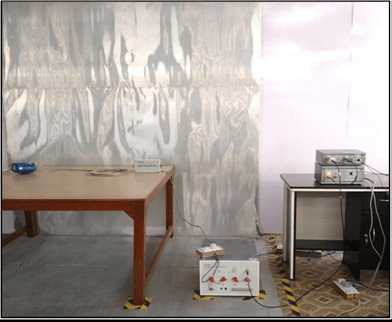What is CISPR 11?
CISPR 11 is a test method for testing EMC disturbances arising from Industrial, scientific and medical equipment. The exact title of the standard focuses on – Radio-frequency disturbance characteristics – Limits and methods of measurement.
CISPR 11:2019 applies to industrial, scientific and medical electrical equipment operating in the frequency range 0 Hz to 400 GHz and to domestic and similar appliances designed to generate and/or use locally radio-frequency energy. This standard covers emission requirements related to radio-frequency (RF) disturbances in the frequency range of 9 kHz to 400 GHz.
Introduction
We, ITC India, an NABL and IABCBL Accreditated Testing Laboratory are a Leading testing Company having reach all over the country, providing technical guideline for CE clients along with performing Inspections and testing for CE certifications. We offer complete solution of EMC/EMI Testing services including Technical Guidance and Documentation.
What is EMC/EMI ?
EMI/EMC testing is a critical step in bringing a new product to market. Electromagnetic compatibility is the ability of electrical equipment and systems to function acceptably in their electromagnetic environment, similarly Emissions testing – measures the amount of electromagnetic noise generated by the device during normal operation. The purpose of these tests is to ensure that any emission from the device are below the relevant limits defined for that type of device.
What is the need of EMC/EMI Testing?
The purpose of this EMC/EMI Testing is to Evaluate/Ensure that your product is capable to perform well without loosing its intended function in the presence of Electromagnetic Energy & It doesn’t emit a large amount of electromagnetic inference.
Products Covered under CISPR 11:2019
Ventilator, Photometer, Spectrometer, Compressor, Currency & binding Machine , Sewing Machine Microprocessor based spectrometer, Relays, Proximity Switches, Timer Bar, Portable Chromatography System, Mini spectrometer, Petrol pump (control unit), Flame Photo meter, Calorie meter, Signal Generator, Capacitance Meter, Insulation Tester , Controller for air conditioning system for railway etc.
What is Conducted Emissions Testing?
The device creates electromagnetic energy and a certain portion of it will be conducted onto the power supply cord. In order to restrict the amount of interference your device can couple back onto a power supply, test labs measure these emissions and verify that they comply with specified limits. This helps to ensure that the local power supply remains relatively ‘clean’ and nearby devices won’t be affected by your device.
Equipment used for Conducted Emissions Testing
- Line Impedance Stabilization Network (LISN)
- EMI Test Receiver
- RF Cable
- Attenuator
Classification of Equipment
Separation Into Group
Group 1 Equipment: Group 1 contains all equipment in the scope of this standard which is not classified as group 2 equipment
Group 2 Equipment: Group 2 contains all ISM RF equipment in which radio-frequency energy in the frequency range 9 kHz to 400 GHz is intentionally generated and used or only used locally, in the form of electromagnetic radiation, inductive and/or capacitive coupling, for the treatment of material, for inspection/analysis purposes, or for transfer of electromagnetic energy.
Division Into Classes
Class A: Equipment is equipment suitable for use in all locations other than those allocated in residential environments and those directly connected to a low voltage power supply network which supplies buildings used for domestic purposes Class A equipment shall meet class A limits.
Class B: Equipment is equipment suitable for use in locations in residential environments and in establishments directly connected to a low voltage power supply network which supplies buildings used for domestic purposes. Class B equipment shall meet class B limits.
Limits and Methods for the Assessment of Wired Network Ports
- Electric Power Supply Interface
The limits and measurement method for the assessment of conducted disturbance voltages at the AC or DC electric power supply interface terminals for the frequency range 0.15MHz to 30MHz are given in Table 1.
Equipment Under Test Configuration
Typical Test Setup
What is Radiated Emissions Testing?
Radiated emissions testing involves measuring the electromagnetic field strength of the emissions that are unintentionally generated by the product into the air.
Types of Radiated Emissions Test Sites
Open Area Test Site (OATS)
Semi Anechoic Chamber
Fully Anechoic Chamber
Equipment used for Radiated Emissions Testing
- TRILOG Super Broadband test antenna
- Spectrum Analyser
- Co axial Test probe
Limits and Methods for the Assessment of the Enclosure Port
- Enclosure Port
Radiated-field disturbance limits in the frequency range of 0.15 KHz to 1 GHz.







